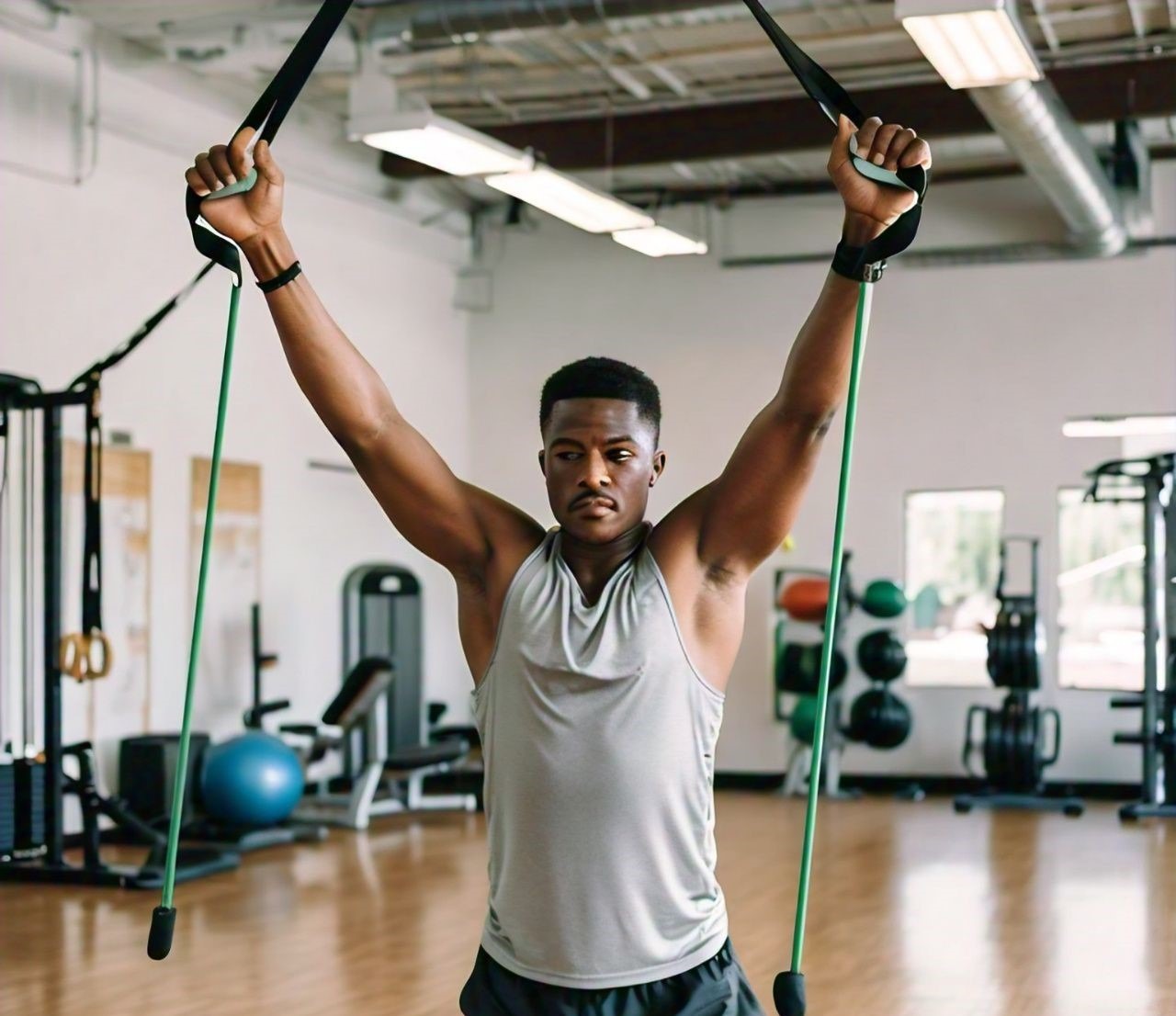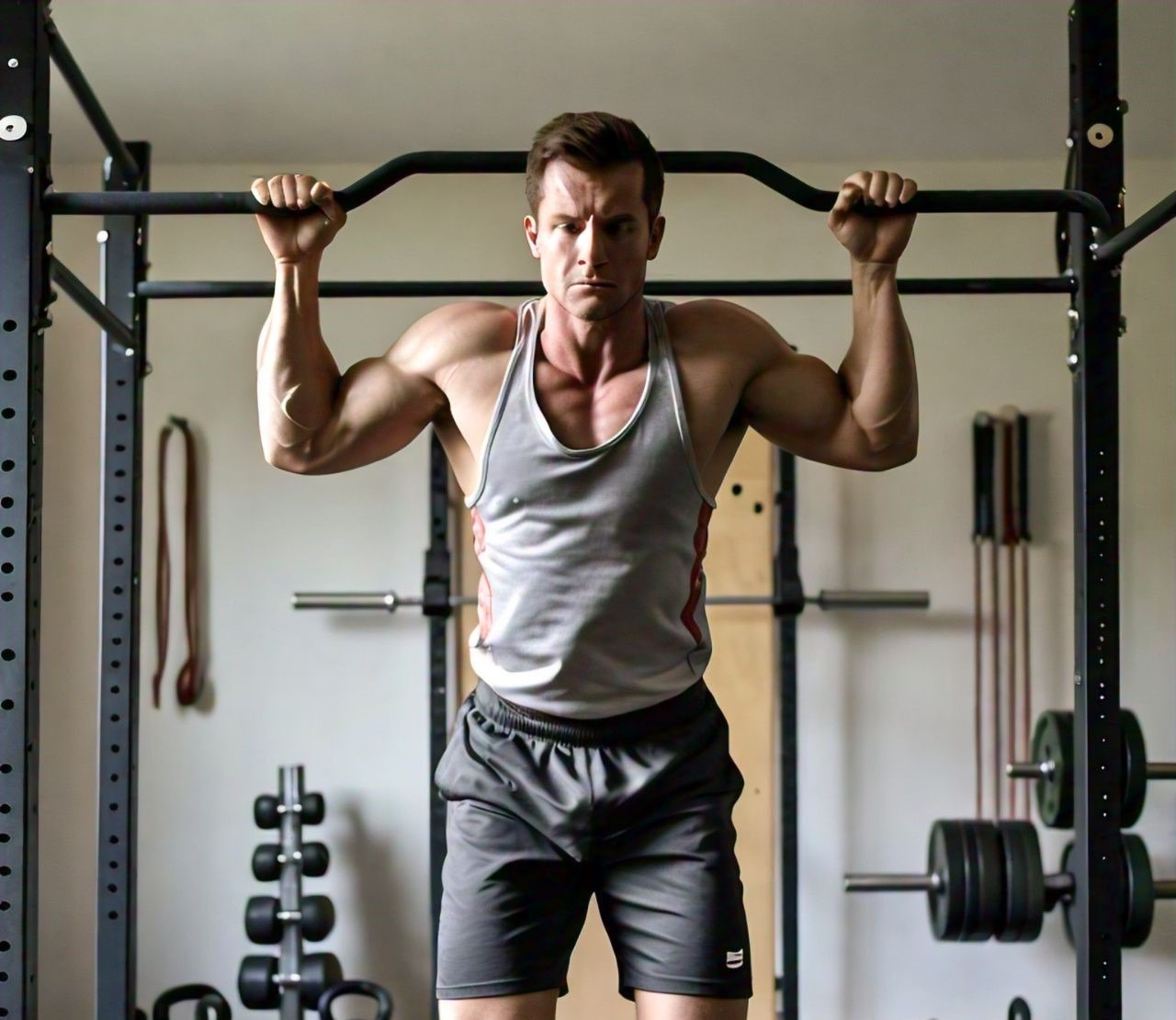Abs Workout Exercises at Home
Introduction
Achieving a strong, defined core is a common fitness goal for many individuals. Whether you’re a fitness enthusiast or a beginner, working on your abs can provide numerous benefits, including improved posture, enhanced athletic performance, and better overall health. The convenience of working out at home allows you to incorporate effective abs exercises into your routine without needing a gym membership. This comprehensive guide will introduce you to new abs workout exercises at home for beginner and advanced levels, ensuring you can tailor your workouts to your fitness level and goals.
Why Focus on Abs?
The abdominal muscles, or “abs,” play a crucial role in stabilizing your entire body. A strong core supports your spine, aids in balance and stability, and reduces the risk of injuries. Additionally, well-developed abs can improve your performance in various physical activities, from running and lifting to daily tasks like bending and lifting objects.
Benefits of Strong Abs:
- Improved Posture: Strong abs help maintain proper posture by supporting the spine.
- Enhanced Athletic Performance: A strong core improves efficiency in sports and exercises.
- Reduced Back Pain: Strengthening the abs can alleviate and prevent lower back pain.
- Better Balance and Stability: A solid core helps maintain balance, crucial for all movements.
- Aesthetic Appeal: Toned abs contribute to a lean, athletic appearance.
Getting Started with Abs Workouts at Home
Before diving into specific exercises, it’s essential to prepare your workout environment and understand the basics of effective abs training.
Equipment Needed:
- Yoga Mat: Provides cushioning and support for floor exercises.
- Resistance Bands: Adds intensity and variation to your workouts.
- Stability Ball: Enhances balance and core engagement.
Setting Up Your Workout Space:
- Choose a clean, flat area with enough room to move freely.
- Ensure you have good ventilation and lighting.
- Keep your equipment within reach to avoid interruptions during your workout.
Warm-Up Exercises: Warming up prepares your muscles for the workout and reduces the risk of injury. Consider these simple warm-up exercises:
- Jumping Jacks: 2-3 minutes to get your heart rate up.
- Arm Circles: 30 seconds forward and backward to loosen shoulder joints.
- Torso Twists: 1-2 minutes to activate your core and improve flexibility.
Beginner Abs Workout Exercises at Home
If you’re new to abs workouts, starting with beginner-friendly exercises will help you build a strong foundation.
Crunches
How to Perform Crunches:
- Lie on your back with your knees bent and feet flat on the floor.
- Place your hands behind your head without pulling on your neck.
- Engage your core and lift your shoulders off the floor, then slowly lower back down.
Common Mistakes to Avoid:
- Avoid pulling your neck; use your abs to lift your shoulders.
- Keep your lower back pressed into the floor to prevent strain.
Variations for Beginners:
- Basic Crunch: Perform the standard crunch with proper form.
- Oblique Crunch: Twist your torso to bring your right elbow towards your left knee and vice versa.
Plank
Steps to Perform a Proper Plank:
- Start in a push-up position with your hands directly under your shoulders.
- Keep your body in a straight line from head to heels.
- Hold this position, engaging your core and glutes.
Benefits of Planking:
- Strengthens the entire core.
- Improves posture and balance.
- Reduces the risk of back pain.
Modifications for Beginners:
- Knee Plank: Perform the plank with your knees on the floor.
- Elbow Plank: Lower your forearms to the ground for added stability.
Leg Raises
Instructions for Performing Leg Raises:
- Lie flat on your back with your legs straight.
- Place your hands under your glutes for support.
- Lift your legs towards the ceiling while keeping them straight.
- Slowly lower your legs back down without touching the floor.
Tips for Maintaining Form:
- Keep your lower back pressed into the floor.
- Move slowly and control the motion.
Simplified Versions for Beginners:
- Bent-Knee Leg Raises: Bend your knees while lifting your legs to reduce the intensity.
Bicycle Crunches
How to Do Bicycle Crunches:
- Lie on your back with your hands behind your head.
- Lift your legs off the floor and bend your knees at a 90-degree angle.
- Bring your right elbow towards your left knee while extending your right leg.
- Switch sides and repeat the motion.
Advantages for Targeting Multiple Abs Muscles:
- Engages the rectus abdominis, obliques, and hip flexors.
- Provides a dynamic and effective core workout.
Beginner-Friendly Adjustments:
- Slow Bicycle Crunch: Perform the motion slowly to focus on form and control.
Advanced Abs Workout Exercises at Home
For those with more experience, advanced exercises can challenge your abs and take your workouts to the next level.
Hanging Leg Raises
Detailed Steps to Perform Hanging Leg Raises:
- Hang from a pull-up bar with your arms straight.
- Engage your core and lift your legs towards the bar.
- Lower your legs back down slowly.
Importance of Control and Form:
- Avoid swinging your body; use your abs to lift your legs.
- Keep your movements slow and controlled.
Advanced Variations:
- Toes-to-Bar: Lift your legs higher to touch the bar.
- L-Sit Hold: Hold your legs parallel to the floor for an isometric challenge.
Ab Wheel Rollouts
How to Use an Ab Wheel:
- Kneel on the floor and hold the ab wheel handles.
- Roll the wheel forward, extending your body.
- Use your abs to pull the wheel back to the starting position.
Techniques for Maximizing Effectiveness:
- Maintain a straight line from head to knees.
- Avoid arching your back; keep your core engaged.
Tips for Advanced Users:
- Standing Rollouts: Perform the exercise from a standing position for added difficulty.
Russian Twists
Performing Russian Twists with Proper Form:
- Sit on the floor with your knees bent and feet lifted.
- Lean back slightly and hold a weight or medicine ball.
- Twist your torso to the right, then to the left.
Using Weights for Added Intensity:
- Hold a dumbbell or kettlebell to increase resistance.
Variations for Advanced Exercisers:
- Feet-Off-The-Ground Twists: Lift your feet off the ground to engage your core further.
Decline Sit-Ups
Steps for Decline Sit-Ups:
- Secure your feet under the pads of a decline bench.
- Lie back with your hands behind your head.
- Engage your core and sit up, then slowly lower back down.
Benefits of Using a Decline Bench:
- Increases the range of motion.
- Adds intensity to the exercise.
Advanced Modifications:
- Weighted Decline Sit-Ups: Hold a weight plate or dumbbell for added resistance.
Combining Workouts for Effective Results
Creating a balanced abs workout routine ensures you target all areas of your core for optimal results.
Sample Weekly Workout Plan:
- Monday: Beginner exercises (Crunches, Plank, Leg Raises)
- Wednesday: Advanced exercises (Hanging Leg Raises, Ab Wheel Rollouts, Russian Twists)
- Friday: Combination of both levels (Mix of beginner and advanced exercises)
Tips for Mixing Exercises:
- Alternate between beginner and advanced exercises to prevent overtraining.
- Include rest days to allow for muscle recovery.
Common Mistakes to Avoid in Abs Workouts
To get the most out of your abs workouts, avoid these common mistakes:
- Overtraining the Abs: Give your muscles time to recover by including rest days.
- Neglecting Other Core Muscles: Include exercises that target the entire core, not just the abs.
- Improper Form and Technique: Focus on maintaining proper form to prevent injuries.
- Not Progressing Exercises Over Time: Gradually increase the difficulty of your exercises to continue seeing progress.
Nutrition Tips for Abs Development
A well-balanced diet plays a significant role in developing visible abs.
Foods That Support Abs Muscle Growth:
- Lean Proteins: Chicken, fish, eggs, and tofu.
- Healthy Fats: Avocados, nuts, and olive oil.
- Complex Carbohydrates: Quinoa, brown rice, and sweet potatoes.
- Fruits and Vegetables: Provide essential vitamins and minerals.
Hydration and Its Role in Muscle Recovery:
- Drink plenty of water to stay hydrated.
- Proper hydration aids in muscle recovery and performance.
Recovery and Rest for Abs Workouts
Incorporating rest and recovery into your routine is crucial for muscle growth and injury prevention.
Importance of Rest Days:
- Allows muscles to repair and grow.
- Prevents overuse injuries.
Stretching and Cool-Down Exercises:
- Child’s Pose: Stretch your lower back and relax your muscles.
- Cat-Cow Stretch: Increase flexibility in your spine and core.
Foam Rolling and Other Recovery Techniques:
- Use a foam roller to massage tight muscles and improve blood flow.
Tracking Progress and Staying Motivated
Monitoring your progress and staying motivated are key to achieving your fitness goals.
Setting Realistic Goals:
- Start with achievable goals and gradually increase their difficulty.
- Track your progress with photos, measurements, and fitness apps.
Using Fitness Apps and Trackers:
- Apps like MyFitnessPal and Fitbit can help monitor your workouts and nutrition.
Celebrating Milestones and Progress:
- Reward yourself for reaching milestones to stay motivated.
- Share your progress with friends and on social media for encouragement.
Conclusion
Strengthening your abs with targeted exercises at home can significantly improve your overall fitness and quality of life. By incorporating a variety of new abs workout exercises at home for beginner and advanced levels, you can create a balanced routine that challenges your core muscles effectively. Remember to stay consistent, maintain proper form, and support your workouts with a nutritious diet and adequate rest.
For more information on fitness and health, check out these resources:
Explore more articles on our site:
- How to Increase Running Stamina for Beginners at Home
- What Happens if You Don’t Get Enough Sleep Consistently: Effects and Solutions
- The Ultimate Guide to Healthy Living in 2024
- The Future of Artificial Intelligence: What to Expect
- Unlocking the Potential of Chat GPT Software: Revolutionizing AI Conversations
- Best Sleeping Position for Peripheral Artery Disease [New 2024]
- How to Increase Running Stamina for Beginners at Home
- 5 New Inner Thigh Exercises for Men and Women





Thank you for this well-written and informative article. The practical tips you’ve shared are going to be very useful for my work.